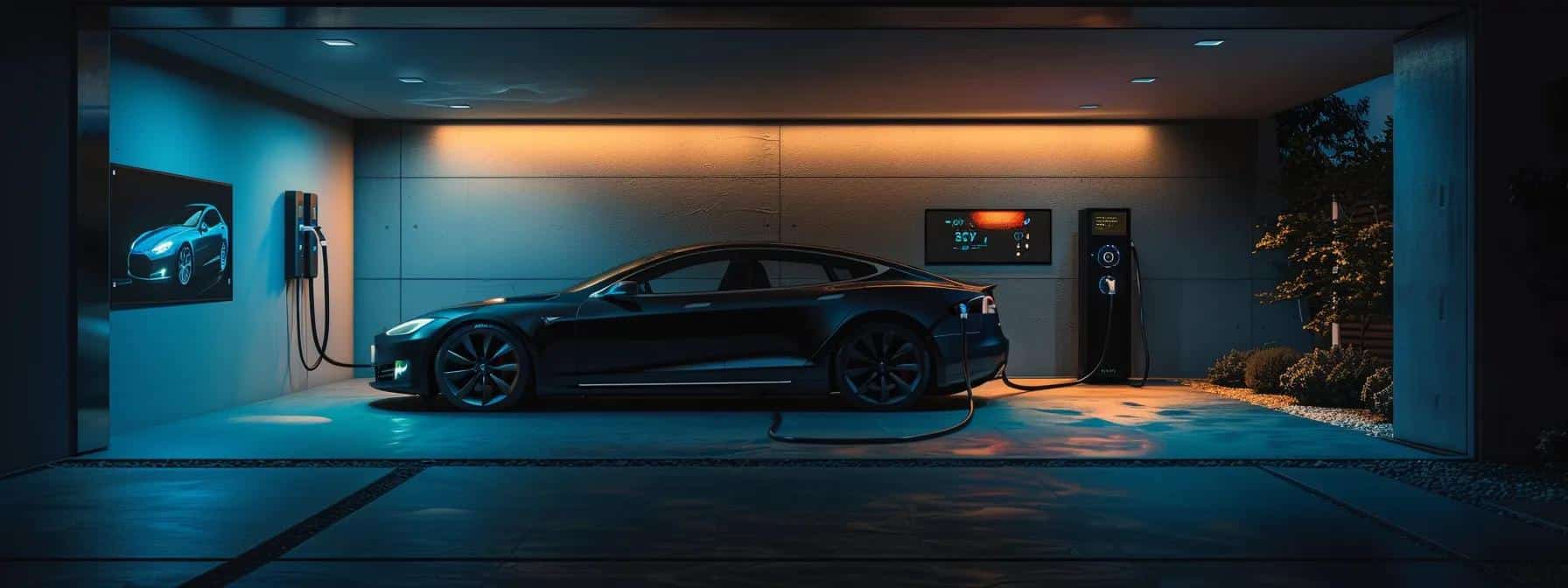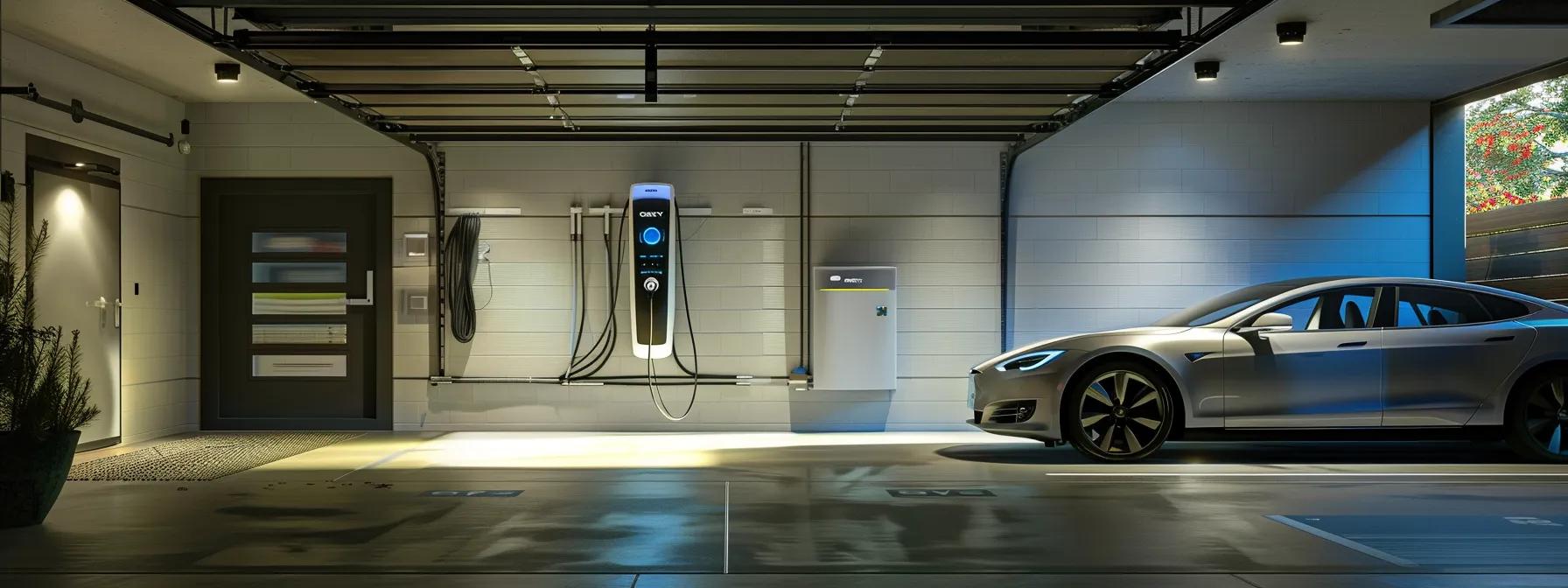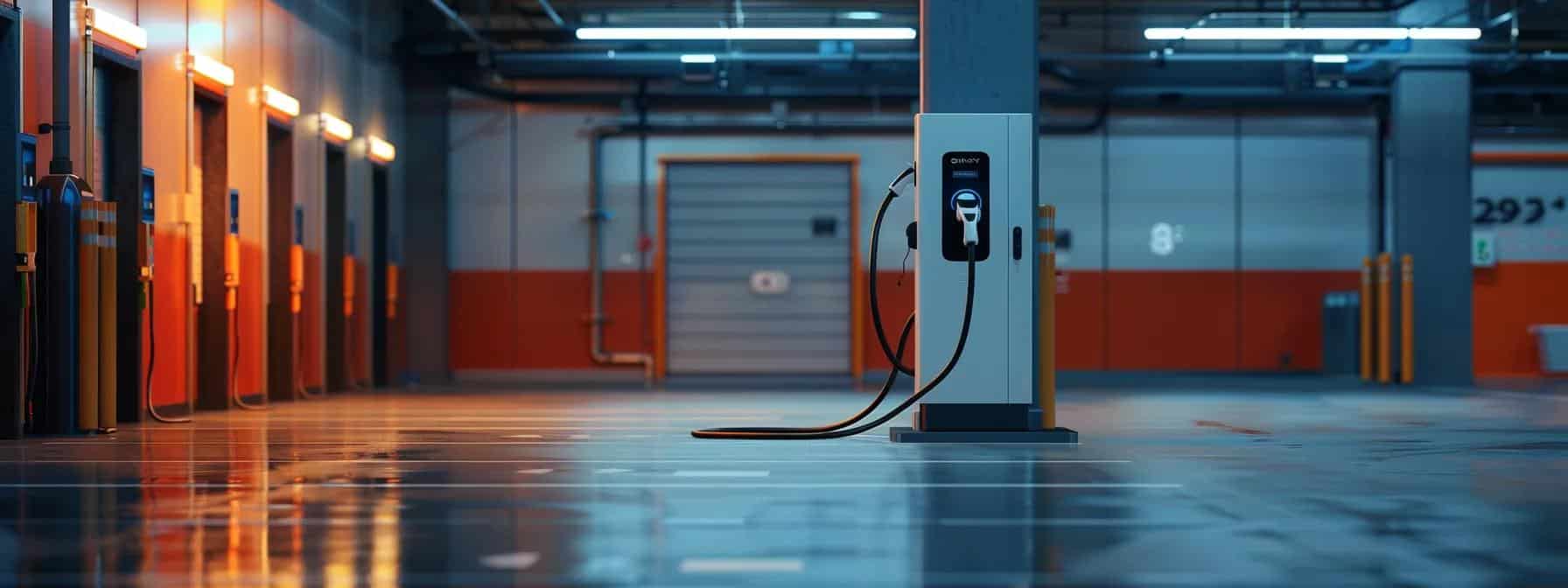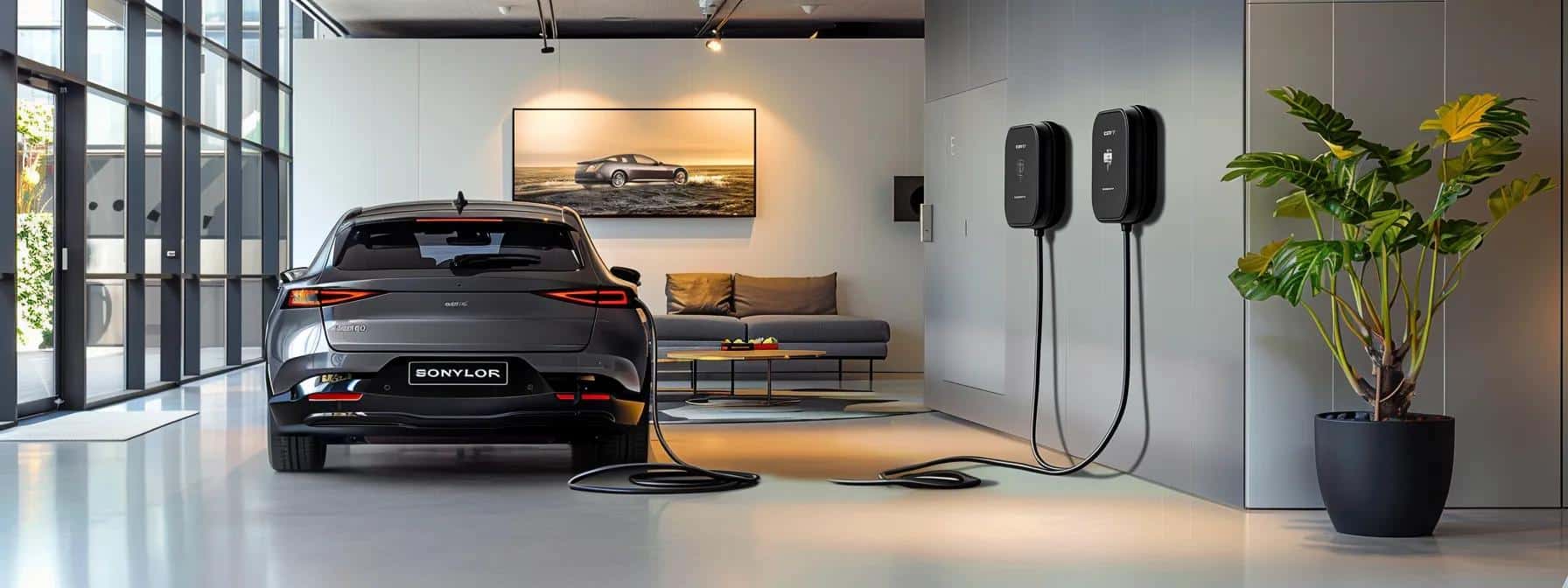Essential Steps for EV Charger Installation in Lexington
When planning an EV charger installation, homeowners in Lexington must consider several technical and regulatory elements. The process involves assessing electrical capacity, selecting the right charger, securing permits, planning the installation location, hiring professionals, and ensuring optimal performance after installation. This guide clarifies each step and provides actionable recommendations for a safe and efficient installation.
Assess Your Home’s Electrical Capacity for EV Charger Setup
Homeowners must evaluate their electrical system to ensure it can support an EV charger without overload. This involves checking system specifications, circuit breaker sizes, and wiring compatibility. A proper assessment prevents safety hazards and costly upgrades.
Determine Existing Electrical System Specifications and Limits
Review your main electrical panel’s amperage capacity and compare it to the load required by an EV charger. Understanding your system’s limits helps decide if a service upgrade is needed. A licensed electrician can provide insights on whether your current infrastructure can support a new Level 2 charger.
Check for Proper Circuit Breaker Size and Amperage Rating
Ensure that the circuit breaker and wiring are appropriately rated. The breaker must match the charger’s requirements—typically between 40 and 50 amps—to avoid overloads and short circuits. Proper sizing enhances safety and compliance with local codes.
Evaluate Your Home’s Wiring Condition and Compatibility
Examine wiring quality, age, and compatibility from the service entrance to the charging point. Older wiring might not meet current standards, and upgrades could be necessary to support the additional load safely.
Consult an Electrician for Professional Recommendations
A licensed electrician can recommend necessary upgrades, identify hazards, and ensure code compliance. Their expertise is also valuable for planning future expansions, such as integrating solar panels or additional charging points.
Analyze Your Energy Consumption and Charging Needs
Review your current energy usage and estimate the additional load from an EV charger. Evaluating vehicle charging frequency and battery capacity helps ensure the installation meets your needs without compromising other loads.
Choose the Right EV Charger Model for Your Needs

Selecting a charger that matches your home’s and vehicle’s requirements is critical. The model determines charging speed, connectivity features, and overall efficiency. Compare Level 1 and Level 2 chargers, smart charging options, and available incentives to choose the best option.
Identify Charging Speed Requirements Based on Vehicle Model
Determine your vehicle’s charging capacity before selecting a charger. Some vehicles support lower charging speeds while newer models can handle faster charging. Matching the charger output to your vehicle’s acceptance rate maximizes efficiency.
Review Features of Level 1 vs. Level 2 Chargers
Level 1 chargers plug into a standard outlet and are slower, suitable for overnight charging of plug-in hybrids. Level 2 chargers use a dedicated 240-volt circuit for faster charging, ideal for fully electric vehicles. Consider your daily driving needs when deciding between these options.
Consider Smart Charging Options and Connectivity Features
Modern chargers often include features like remote monitoring, scheduling, and energy management. Connectivity options such as Wi-Fi and mobile apps allow control over charging sessions and optimize the load on your electrical system.
Compare Price Points and Warranties of Different Brands
Evaluate price, installation costs, and warranty offerings. Premium models may offer advanced safety features and longer warranties, while budget-friendly options might provide basic functionality. Choose a charger that meets quality standards and fits your budget.
Check Compatibility With Local Incentives or Rebates
Research local incentives, rebates, and tax credits available for EV charger installations. Many utilities offer financial assistance for sustainable upgrades, which can help reduce installation costs and support environmental goals.
Secure Necessary Permits for EV Charger Installation
Before beginning electrical work, secure the required permits from local authorities in Lexington. Permits ensure that the installation meets local building codes and safety regulations, helping avoid fines and ensuring long-term system reliability.
Research Local Building Codes and Regulations in Lexington
Start by familiarizing yourself with local building and electrical codes specific to EV charger installations. Understanding these regulations can streamline the permit application process and minimize delays.
Gather Required Documentation for Permit Application
Prepare a permit package that includes detailed plans, electrical load calculations, property surveys, and contractor credentials. Having the required documents ready helps reduce back-and-forth during the review process.
Submit Permit Applications to Local Authorities
Submit your permit application to the appropriate department. Professional electricians often assist with this step to ensure technical details are accurately presented.
Follow Up on Permit Status and Address Any Concerns
Regularly check the status of your permit and address any issues promptly. Open communication with local officials can help resolve concerns quickly.
Schedule Inspections With Local Building Officials
After installation, schedule inspections to certify that the work complies with codes and safety standards. Inspection approval is crucial for insurance coverage and overall property safety.
Plan the Optimal Installation Location for Your Charger

Choosing the right location for your EV charger is essential for both safety and convenience. The site should offer easy access, weather protection, and comply with distance requirements from the electrical panel.
Evaluate Distance From Electrical Panel to Charging Site
Keep the charger close to the electrical panel to reduce cable lengths, installation costs, and potential voltage drops while ensuring convenience.
Ensure Accessibility for Daily Charging Convenience
Select a spot that is easily accessible for daily use. Consider factors such as driveway layout, parking ease, and protection from environmental elements to ensure uninterrupted charging.
Select a Location That Complies With Safety Standards
Make sure the installation site complies with fire codes and electrical safety standards. Proper clearance from combustible materials and traffic zones minimizes risks.
Account for Weather Protection and Appropriate Outdoor Space
If the charger is installed outdoors, choose a location with adequate protection against weather extremes like rain, snow, and high winds. A covered or sheltered space can prolong the equipment’s lifespan.
Coordinate With Your Electrician for Ideal Placement
Collaborate with your electrician to determine the most efficient and safe placement. Their expertise in local codes and installation best practices is invaluable.
Hire a Qualified Electrician for Professional Installation
A professional installation by a licensed electrician is vital for a safe and compliant EV charger setup. It ensures that the installation meets local codes while optimizing system performance.
Seek Out Licensed Electricians Specializing in EV Chargers
Look for electricians experienced in EV charger installations. Their knowledge of current industry standards and safety protocols ensures a quality installation.
Check References and Reviews From Previous Clients
Research the electrician’s reputation through references and client reviews. A proven track record of successful installations provides confidence in their work.
Request Detailed Quotes Outlining Scope of Work
Obtain detailed quotes that specify labor, materials, permit costs, and any necessary electrical upgrades. Clear quotes help avoid unexpected expenses.
Discuss Installation Timeline and Project Milestones
Outline the installation timeline, including permit approval and key milestones. A coordinated schedule ensures the project proceeds smoothly without major disruptions.
Ensure Safety Practices Are Followed During Installation
Confirm that safety protocols—such as proper lockout/tagout procedures and use of protective equipment—are strictly followed throughout the installation process.
Test and Maintain Your EV Charger for Optimal Performance

After installation, regular testing and maintenance are essential to keep the EV charger functioning efficiently and safely.
Conduct Initial Test to Confirm Proper Charger Functionality
Immediately after installation, perform a test to verify that the charger operates correctly. Check charging speeds, connectivity, and communication with your vehicle to identify any early issues.
Schedule Regular Maintenance Checks With a Qualified Pro
Arrange for routine maintenance inspections by a qualified electrician to detect wear, update firmware, and optimize performance over time.
Monitor Charging Speeds and Performance Over Time
Keep track of charging performance and energy consumption. Monitoring these metrics helps identify and address inefficiencies early.
Address Any Technical Issues Promptly to Ensure Safety
If any issues arise, have them addressed by a professional as soon as possible. Quick intervention prevents safety hazards and system failures.
Keep Abreast of Software Updates for Smart Chargers
Stay informed about software updates from the charger’s manufacturer. Updating the software can enhance performance, add features, and improve security.
Frequently Asked Questions
Q: How do I know if my home’s electrical panel can support an EV charger? A: An evaluation of your panel’s specifications and a consultation with a licensed electrician will determine if your system meets the required amperage and capacity for EV charging.
Q: What is the difference between Level 1 and Level 2 EV chargers? A: Level 1 chargers use a standard outlet and deliver slower charging, while Level 2 chargers use a dedicated 240-volt circuit for faster, more efficient charging.
Q: Are permits required for installing an EV charger in Lexington? A: Yes, permits are mandatory. You must research local building codes, gather documentation, and submit a permit application to local authorities.
Q: How often should my EV charger be maintained? A: It is recommended to schedule a professional maintenance check at least once a year, along with regular monitoring after installation.
Q: Can I install an EV charger myself without a professional electrician? A: While DIY projects are tempting, EV charger installations require professional expertise to ensure safety, code compliance, and optimal performance.
Final Thoughts
Securing an efficient EV charger installation in Lexington requires a detailed and thoughtful approach—from assessing your home’s electrical capacity to regular maintenance. By choosing the right charger, securing necessary permits, planning an optimal location, and hiring a qualified electrician, homeowners can enjoy hassle-free charging, improved energy management, and increased property value. Proactive maintenance and professional expertise are key to a safe, reliable, and sustainable EV charging experience.

